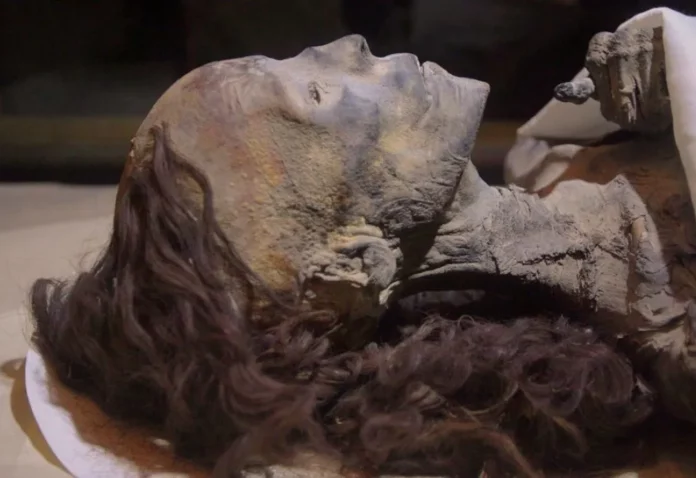The mummy of Queen Tiye was discovered in the second side chamber of the tomb of Amenhotep II. Found by Victor Loret in 1898, it was revealed that Amenhotep II’s tomb had later been repurposed by Ancient Egyptian priests to store many royal mummies from both the 18th and 19th Dynasties.
Some Egyptologists initially believed Tiye was buried in her son’s new capital of Akhetaten (modern Tel el-Amarna), with the assumption that her body and those of other royals were moved after the capital collapsed following her son’s death. Another theory suggests that Tiye was meant to be buried in her husband Amenhotep III’s tomb. There is no definitive conclusion at present.
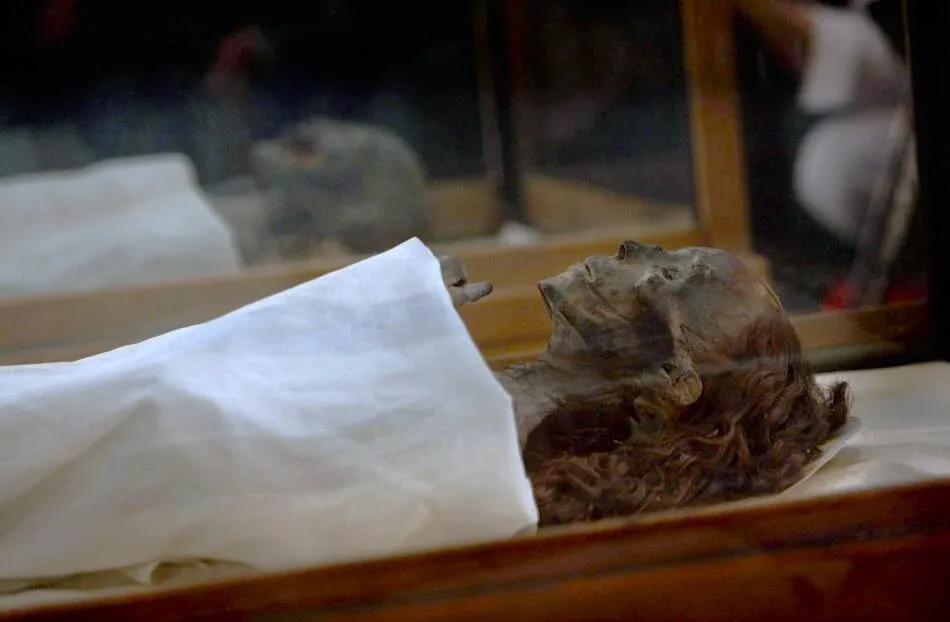
Separate from other mummies in the first side chamber of KV35, Queen Tiye’s body was found in the second side chamber alongside the mummy of a young female (known as The Younger Lady) and an adolescent boy lying between them both.
Some mummies in the other cache of KV35 were found reburied in sarcophagi not their own, with their identities written on rewrapped linens for reburial and identification.
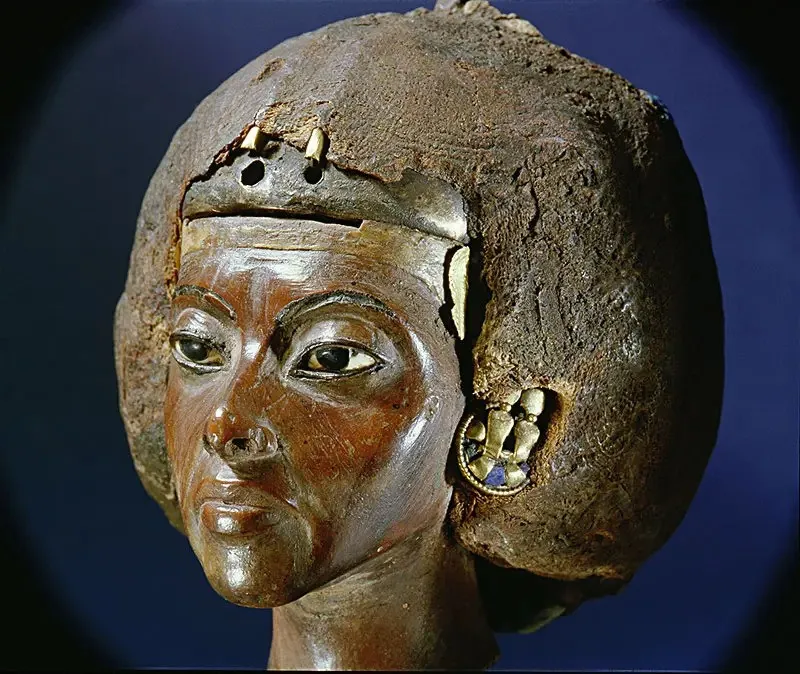
From Medinet el-Gurob.
Now in the Neues Museum, Berlin. ÄM 21834, ÄM 17852
Unfortunately, Tiye, The Younger Lady, and the Adolescent Boy were found nude at the time of their modern discovery, draped only in unwrapped linens. This might be due to poor reburial practices or tomb robberies, or both. The boy remains unidentified as of April 2023. His youth is evident as he is noticeably smaller than the two adult females and has a bald head with one section of long, wavy brown hair. This style, known as the “side lock of youth,” was typical for ancient Egyptian children and adolescents, as seen in many reliefs and statuettes across the Dynastic age.
There are at least two possible identities for the boy, one being Prince Thutmose, the eldest son of Queen Tiye and Amenhotep III, who died young. Thutmose is known for his affection for his pet cat, Ta-Miu, for whom he had a personal sarcophagus made.

Analysis of the two female mummies has confirmed that they are mother and daughter.
For many decades after KV35’s discovery, Queen Tiye’s mummy was simply known as The Elder Lady. Her identity was of great interest to Egyptologists due to her small stature and regal posture, particularly her raised royal arm. Most notable was her serene, delicate face adorned with long, wavy reddish-brown hair that remains luscious and healthy over 3000 years later. This hair was a key feature in confirming her identity. In King Tutankhamun’s tomb, within one of four miniature sarcophagi marked with the Queen’s name, a lock of Tiye’s hair was found. Electron probe analysis in the 1970s confirmed a match between this hair and the hair on the mummy of Queen Tiye. More recent DNA analysis in the 2010s by Dr. Zahar Saleem has definitively confirmed this match.
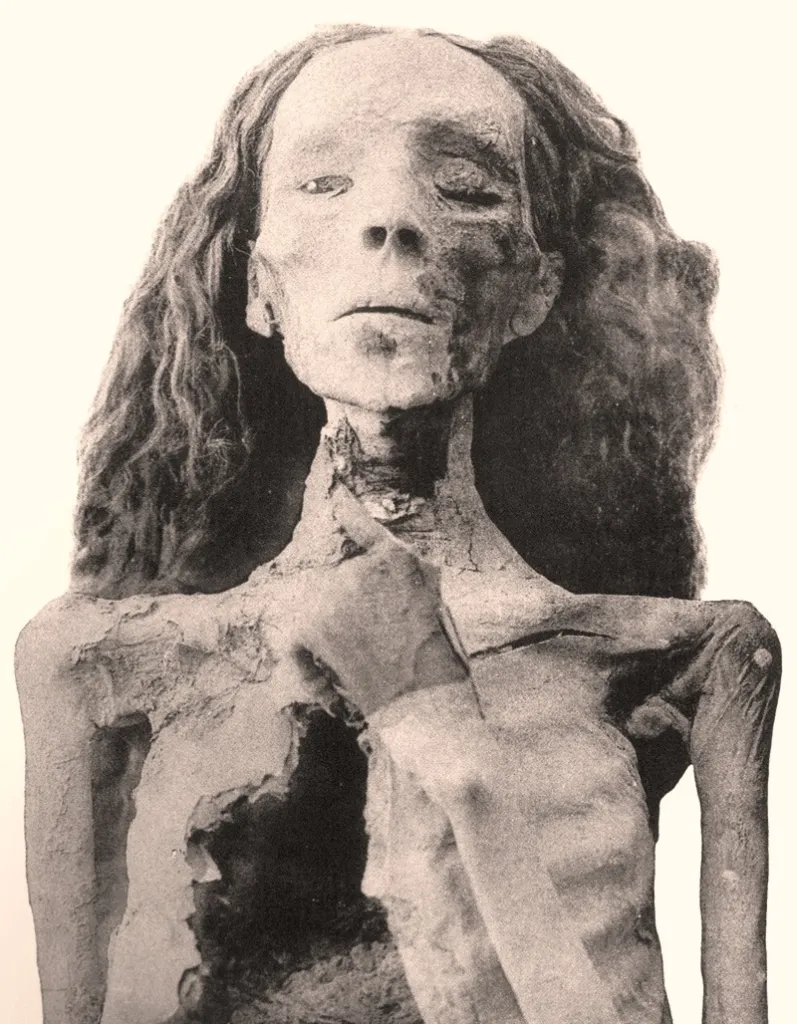
Modern DNA analysis has also confirmed that The Elder Lady is the daughter of Yuya and Thuya, solidifying her identity as Queen Tiye. Her body was mummified according to the traditional practices of her time and is well-preserved despite postmortem injuries likely from tomb robberies. The Queen’s left arm is raised in a royal pose across her chest, with her hand clasping as if holding something, though whatever she held is missing, likely taken in antiquity. Tiye’s right arm lies alongside her body, slightly hovering over her lower torso, with her middle finger absent.
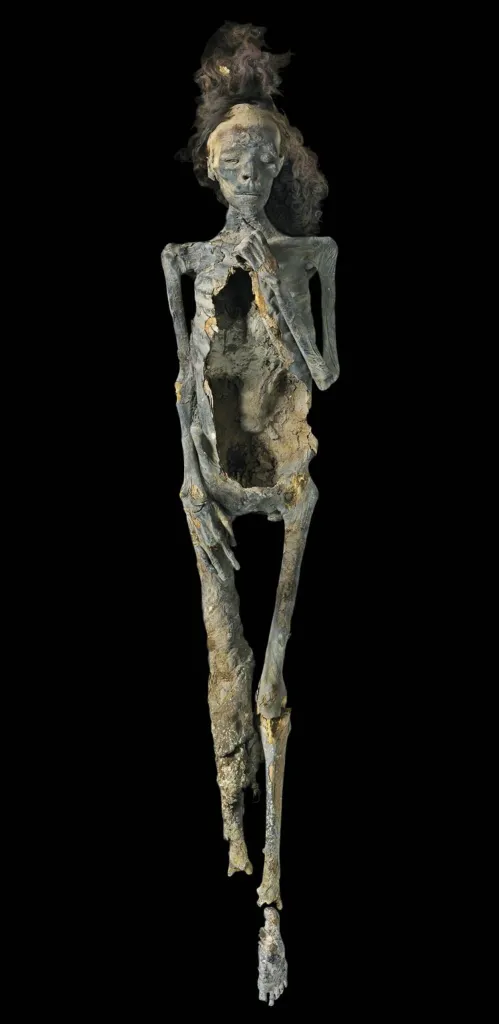
Queen Tiye’s teeth show moderate wear and are in good shape for her age, estimated between 40–50 years. Fascinatingly, only one wisdom tooth remains, with holes for the other three indicating they were removed during her lifetime, providing insight into ancient Egyptian dentistry practices.
The name of Tiye’s daughter remains unknown, and she may never be officially identified. Tiye and Amenhotep III had six daughters, and The Younger Lady is definitely one of them. Until further tests or discoveries are made, identifying The Younger Lady is based on educated guesswork. Despite her unknown name, DNA testing has shown that The Younger Lady is Tutankhamun’s mother and the sister of the mummy known as KV55, who may or may not be King Akhenaten.
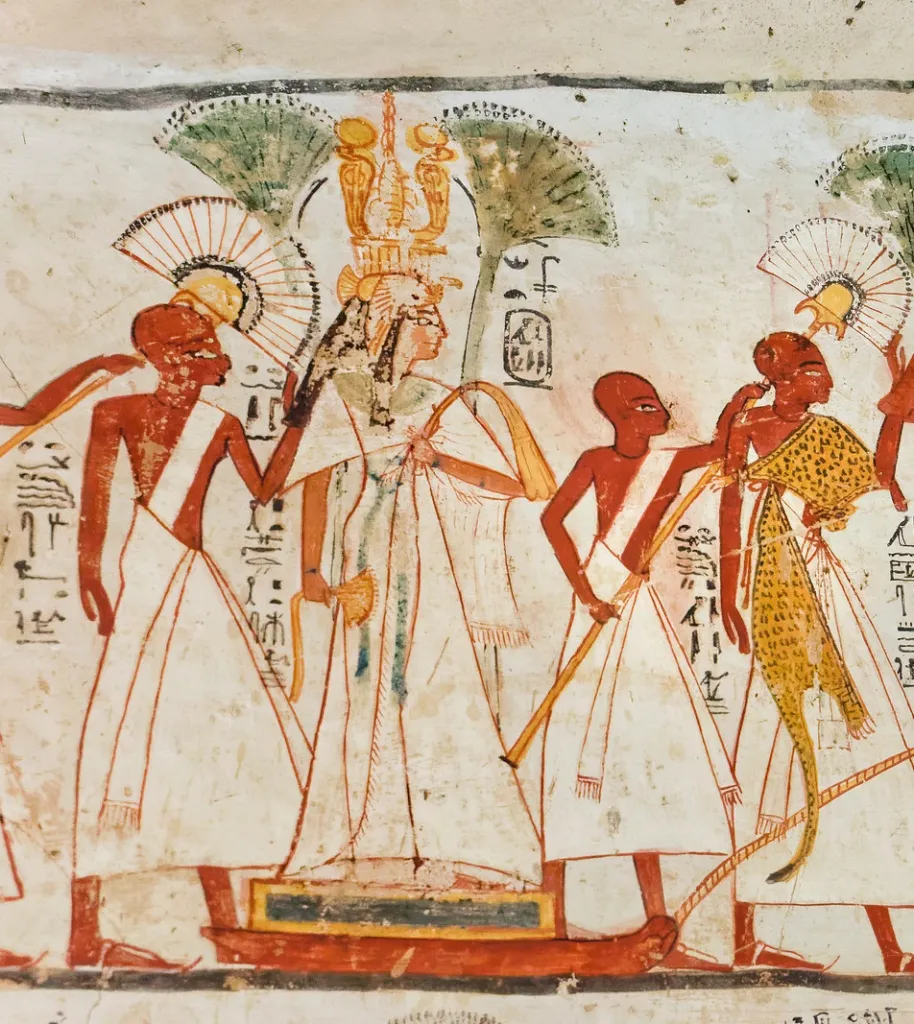
New Kingdom, 19th-20th Dynasty, c. 1295–1170 B.C.
Tomb of Ameneminet (TT277), Qurnet-Murai, Theban necropolis
Photograph by manna4u
Queen Tiye’s mummy measures 145 cm (4 ft 7 inches), but due to disarticulated feet and shrinkage, her living height is estimated at approximately 4 ft 11 inches. Modern analysis estimates her age at death between 40–50 years, but the cause of death remains unknown.



